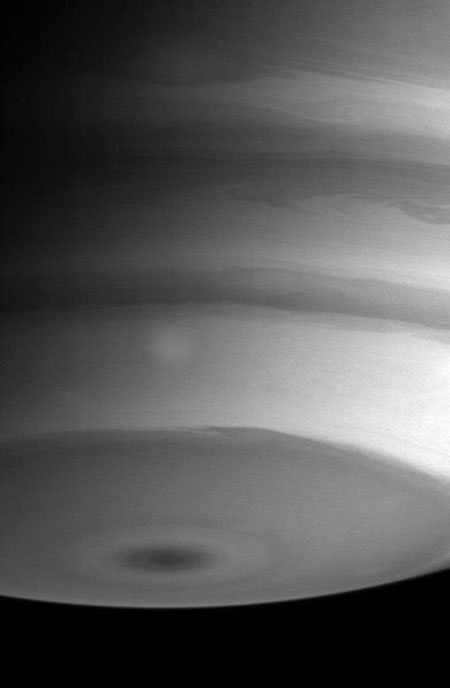Explanation: What happens to Saturn's pervasive clouds at its South Pole? Visible in the above image of Saturn are bright bands, dark belts and a dark spot right over the South Pole. The above image in infrared light spans over 30,000 kilometers and was taken early last month by the robot Cassini spacecraft currently orbiting Saturn. Saturn's atmosphere is about 75 percent hydrogen, 25 percent helium, and small amounts of heavier compounds including water vapor, methane, and ammonia. The relatively low gravity at Saturn's cloud tops result in a thicker haze layer, which in turn makes atmospheric features blurrier than Jupiter.
1999 2000 2001 2002 2003 2004 2005 2006 2007 2008 2009 2010 2011 2012 2013 2014 2015 2016 2017 2018 2019 2020 2021 2022 2023 2024 2025 |
Yanvar' Fevral' Mart Aprel' Mai Iyun' Iyul' Avgust Sentyabr' Oktyabr' Noyabr' Dekabr' |
NASA Web Site Statements, Warnings, and Disclaimers
NASA Official: Jay Norris. Specific rights apply.
A service of: LHEA at NASA / GSFC
& Michigan Tech. U.
|
Publikacii s klyuchevymi slovami:
Saturn - south pole - cassini spacecraft - Saturn - Yuzhnyi polyus - KA Kassini
Publikacii so slovami: Saturn - south pole - cassini spacecraft - Saturn - Yuzhnyi polyus - KA Kassini | |
Sm. takzhe:
Vse publikacii na tu zhe temu >> | |
